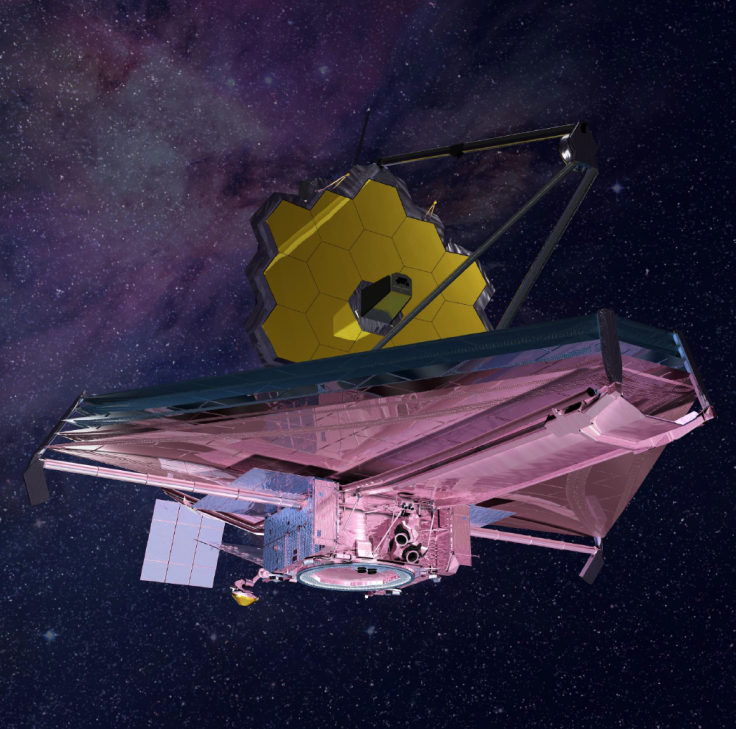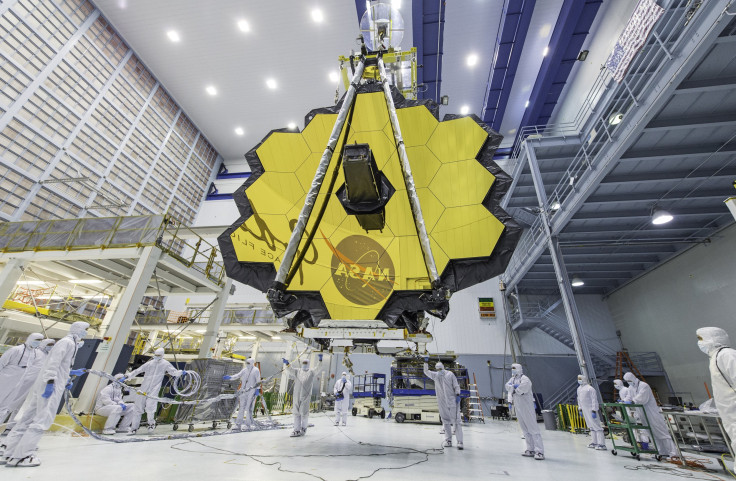NASA Says James Webb Space Telescope Science Targets Include Icy Moons, Galaxy Clusters, Distant Worlds

The most powerful space telescope designed and built by humans is scheduled to launch October 2018, and its mission handlers announced some of its science targets Thursday. The James Webb Space Telescope (JWST), which succeeds and complements the Hubble Space Telescope, will look at a large number of things in the universe, including icy moons, distant exoplanets and galaxy clusters.
The targets announced by JWST’s mission handlers on NASA’s website are part of Guaranteed Time Observations (GTO), a program that provides dedicated observation time to scientists who worked on designing and building the four instruments onboard the telescope.
“From the very first galaxies after the Big Bang, to searching for chemical fingerprints of life on Enceladus, Europa, and exoplanets like TRAPPIST-1e, Webb will be looking at some incredible things in our universe. With over 2100 initial observations planned, there is no limit to what we might discover with this incredible telescope,” Eric Smith, James Webb Space Telescope Director at NASA Headquarters in Washington, D.C., said in a statement.
Read: ESO’s Extremely Large Telescope, World’s Biggest Yet, Starts Construction In Chile
JWST’s observing time is split into a number of cycles, and the first cycle — Cycle 1 — is about 8,700 years, or roughly one year. GTO scientists have been allocated 10 percent of the cycle’s observation time, and their projects will be scheduled early in the mission. Those projects are expected to be complete within two years of the telescope’s operation.

The initial GTO projects cover a broad spectrum, addressing all the science areas that Webb is meant to explore. These include exploration of the first light after Big Bang, the formation of distant galaxies, birth of stars and planets, and alien worlds of exoplanets. Somewhat closer home, GTOs also cover the four outer planets of our solar system and the Kuiper Belt.
“The definition of observations to be conducted by the Webb Guaranteed Time Observers is a major milestone along the timeline for producing revolutionary science with this incredibly powerful observatory. These observations by the teams of people who designed and built the Webb instruments will yield not only amazing science, but will be crucial in putting the observatory through its paces and understanding its many capabilities,” Ken Sembach, director of the Space Telescope Science Institute, which will lead science and mission operations for JWST, said in the statement.
Read: Event Horizon Telescope Starts Operation To Photograph Supermassive Black Holes
“I am very pleased that we’re at this point since it is now possible for the broader science community to begin selecting targets and designing observations for the Early Release Science program and the Cycle 1 call for proposals, which will be issued this fall,” he added.
The call for proposals for non-GTO Cycle 1 observations from the broader scientific community around the world will be issued later in 2017, the statement concluded.
JWST is a collaboration between NASA, the European Space Agency and Canadian Space Agency.
© Copyright IBTimes 2024. All rights reserved.





















